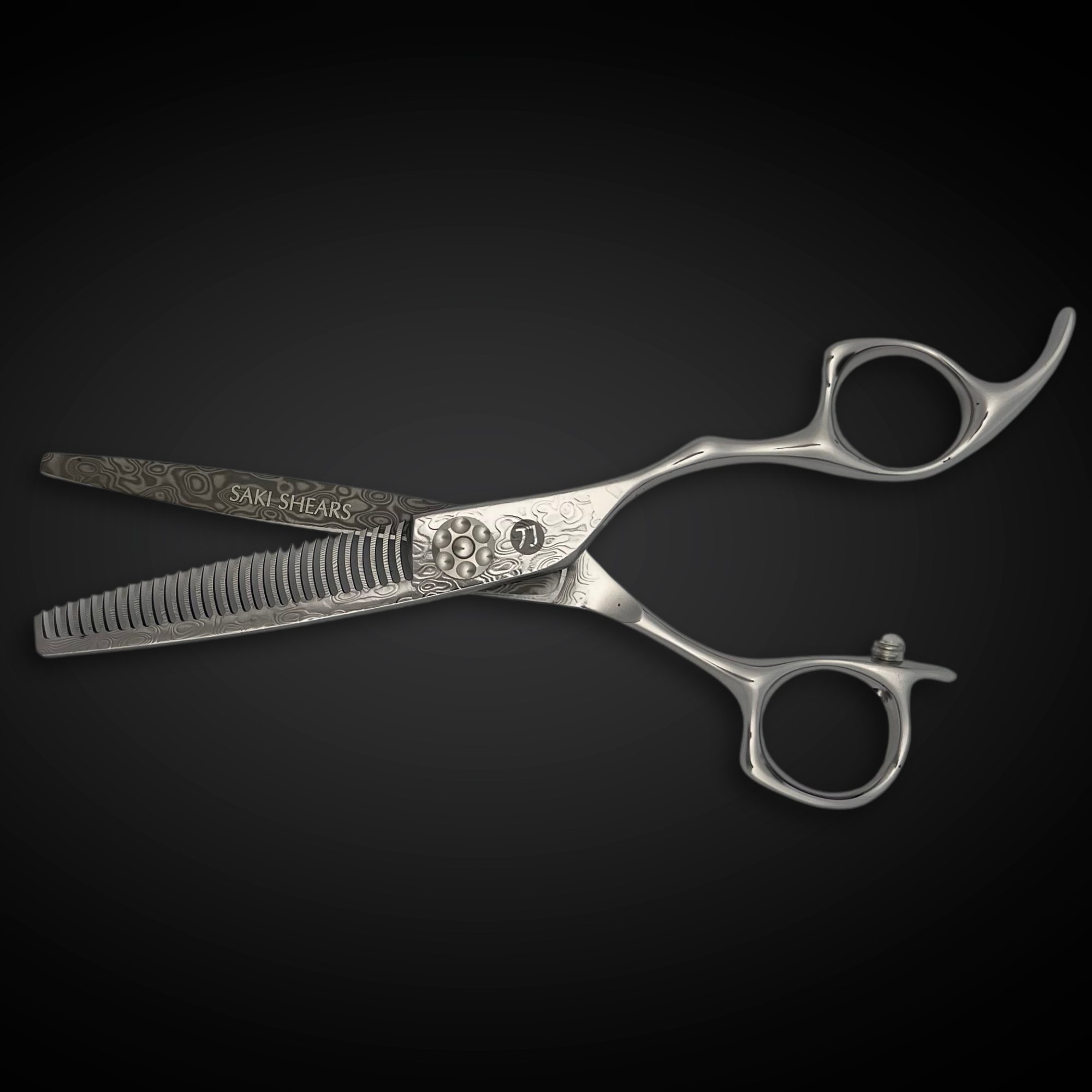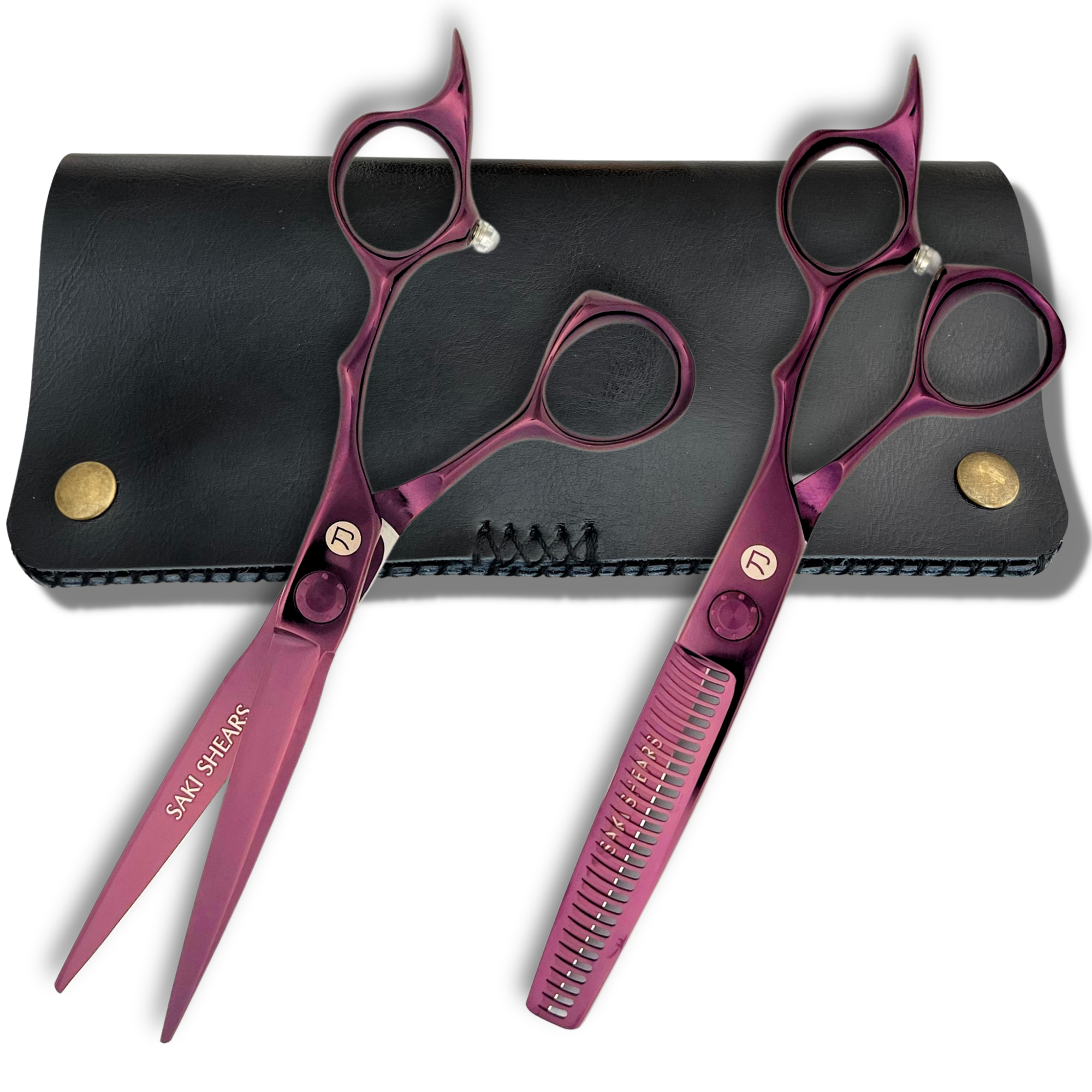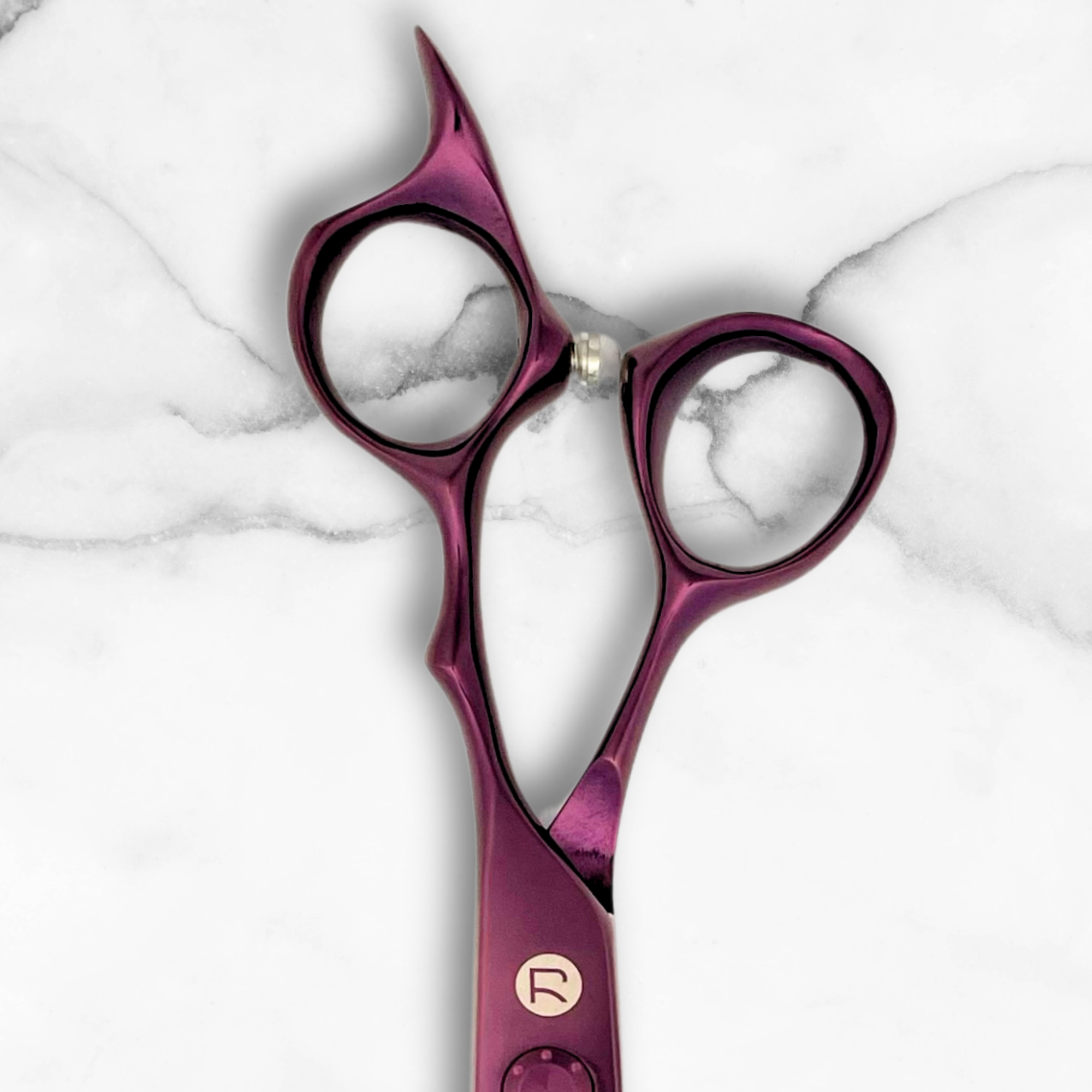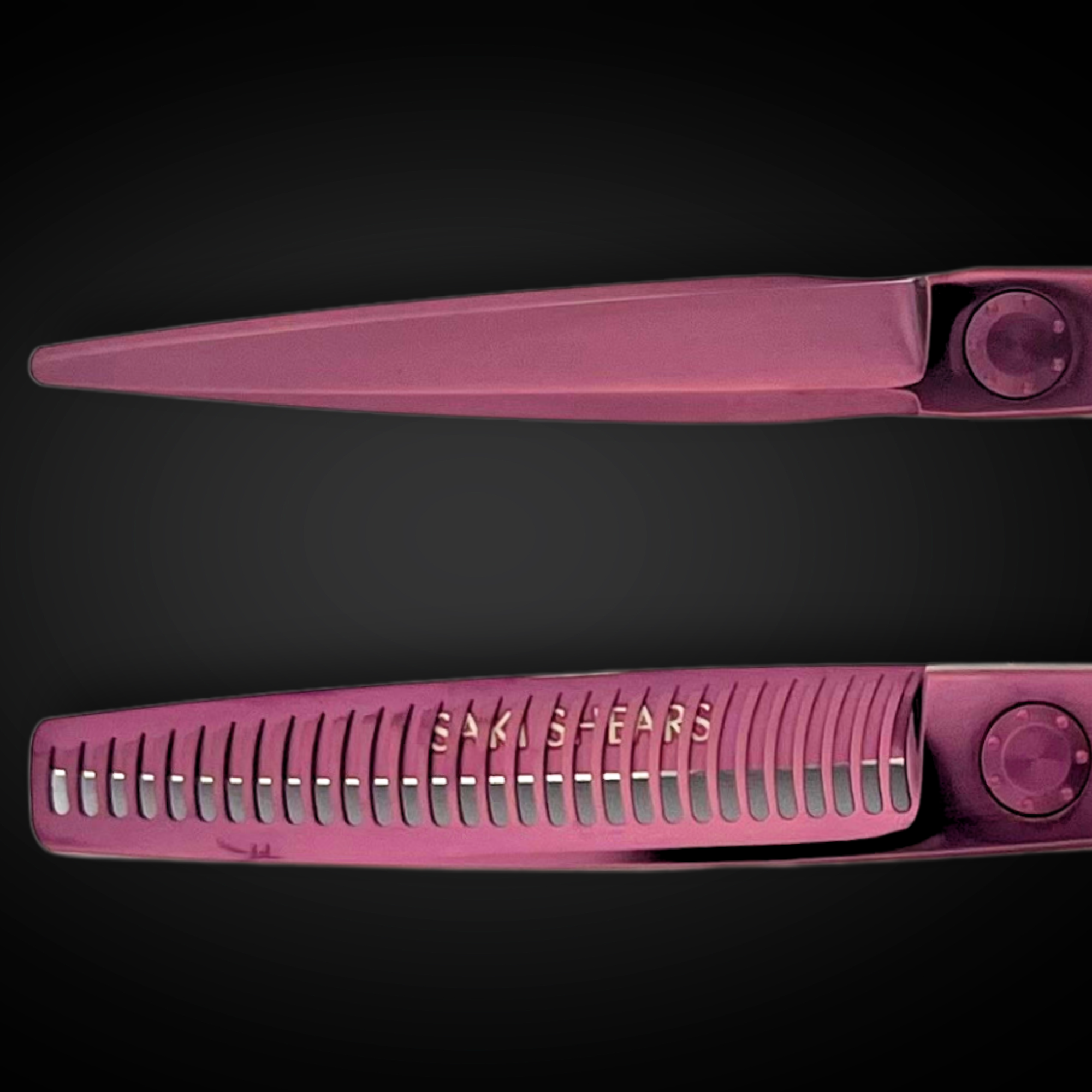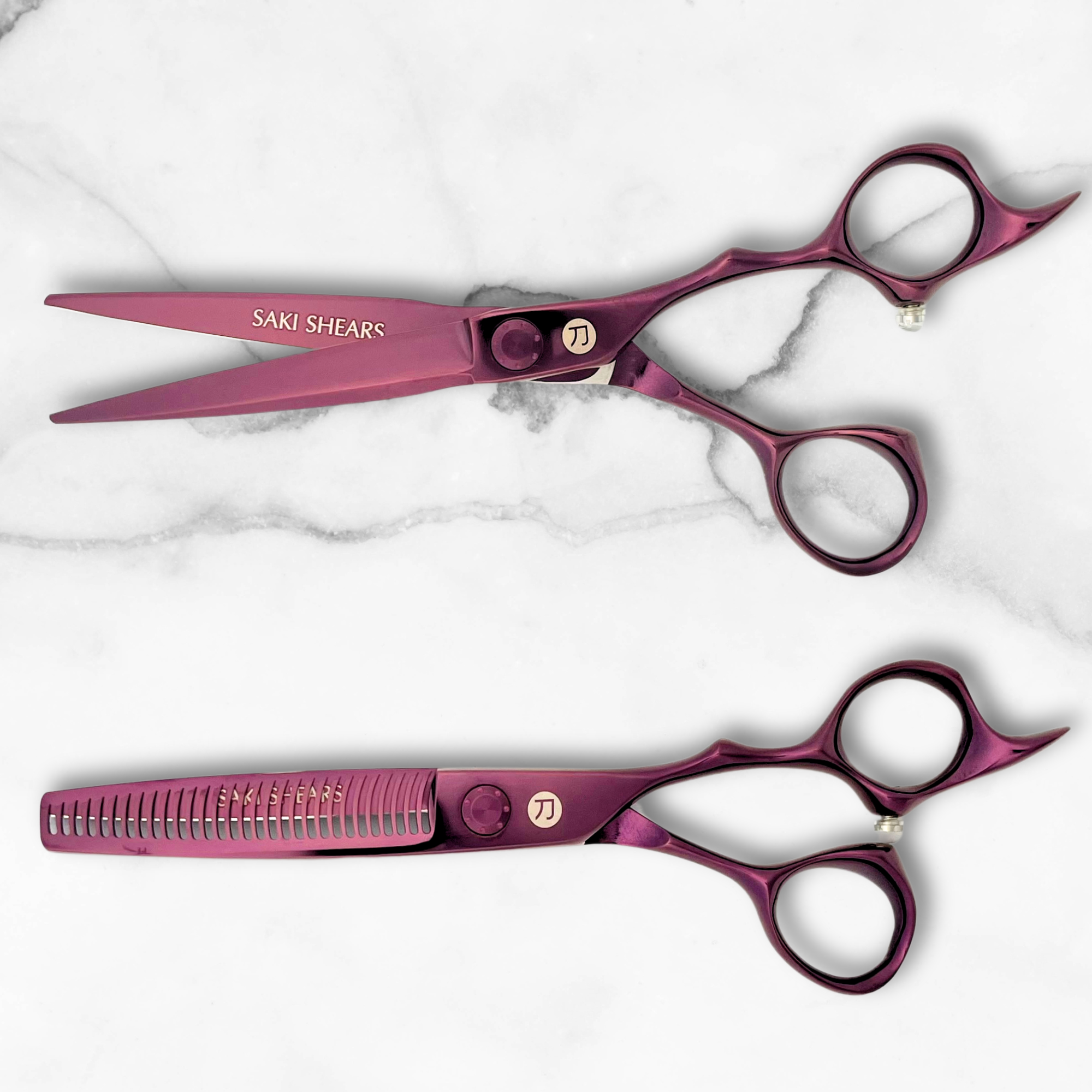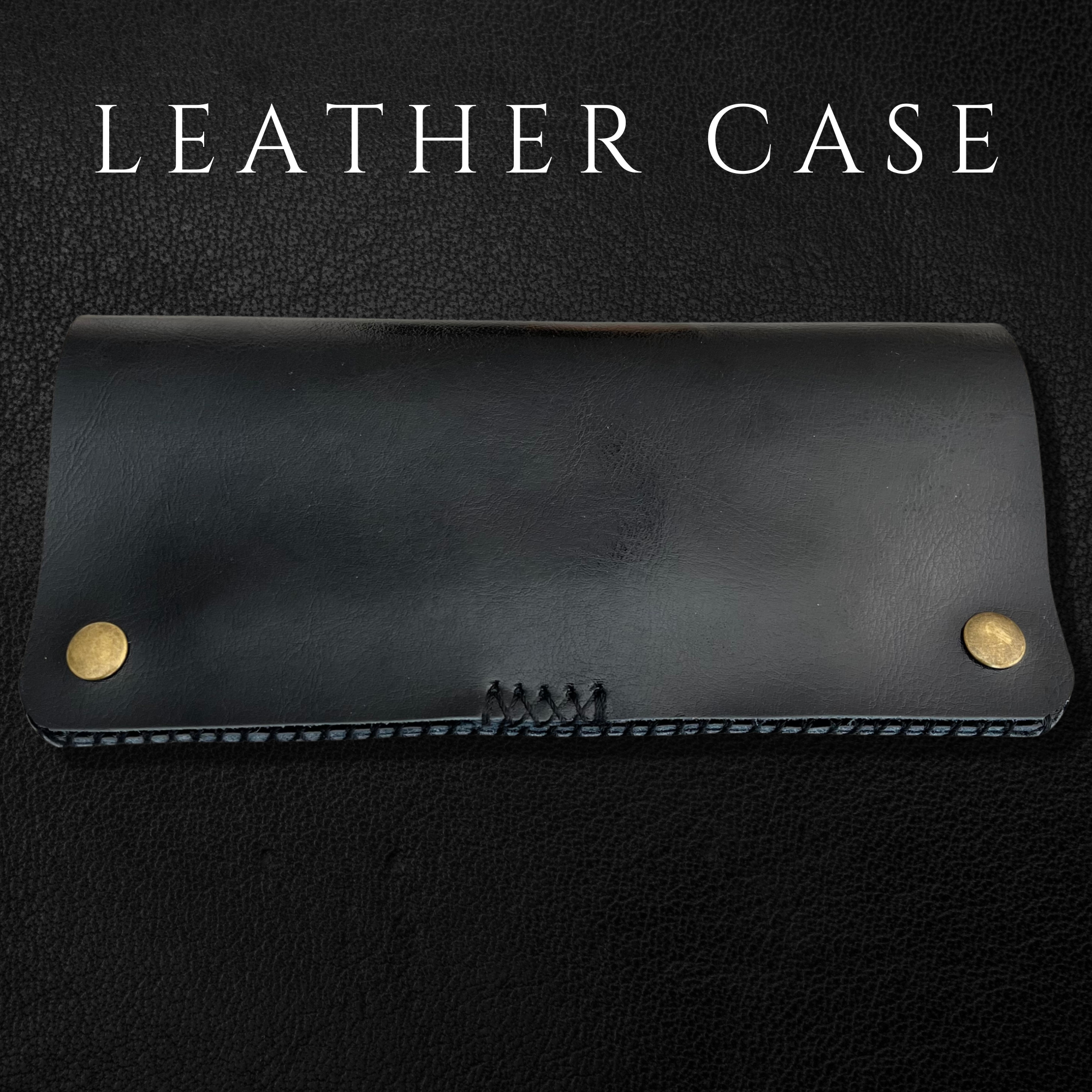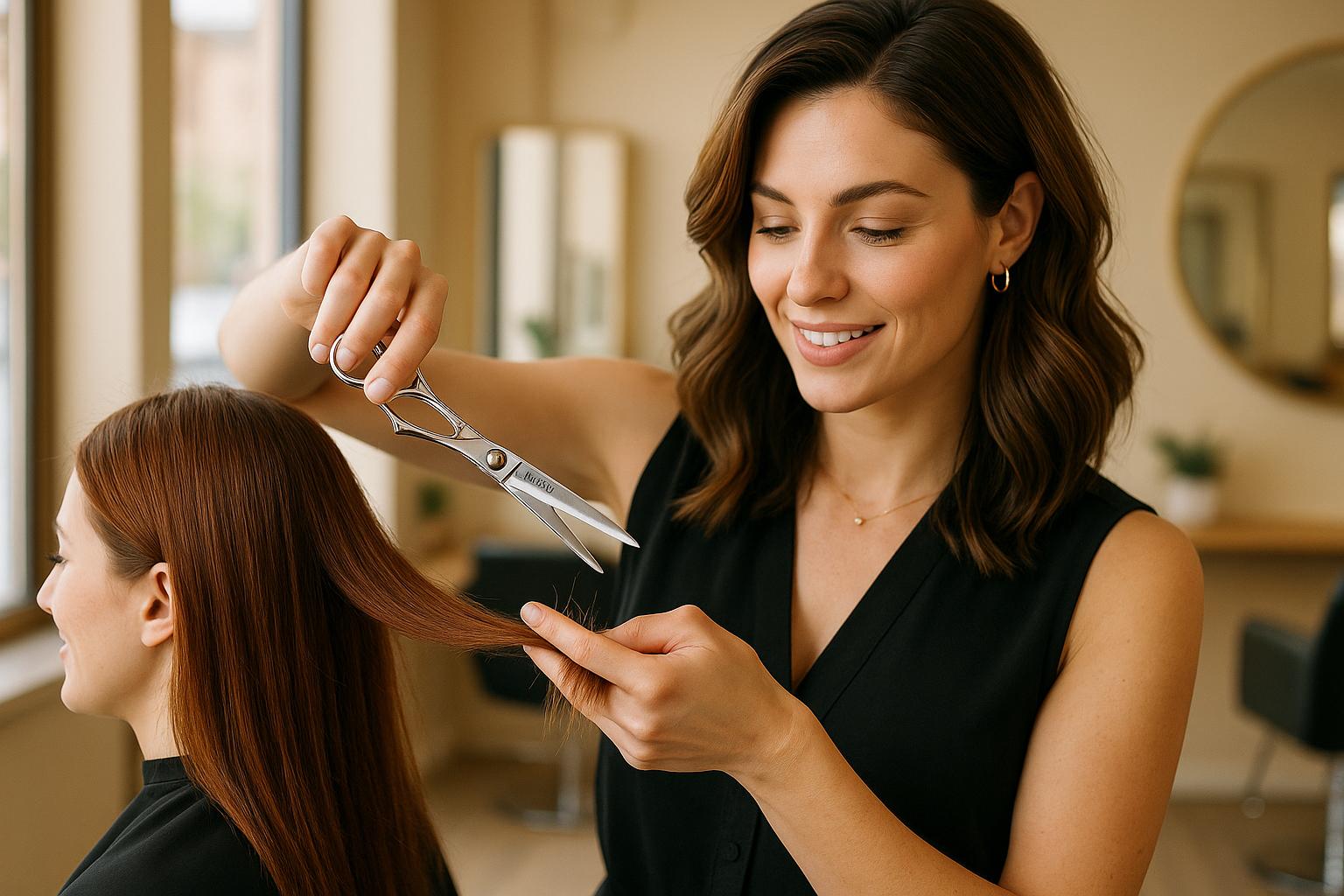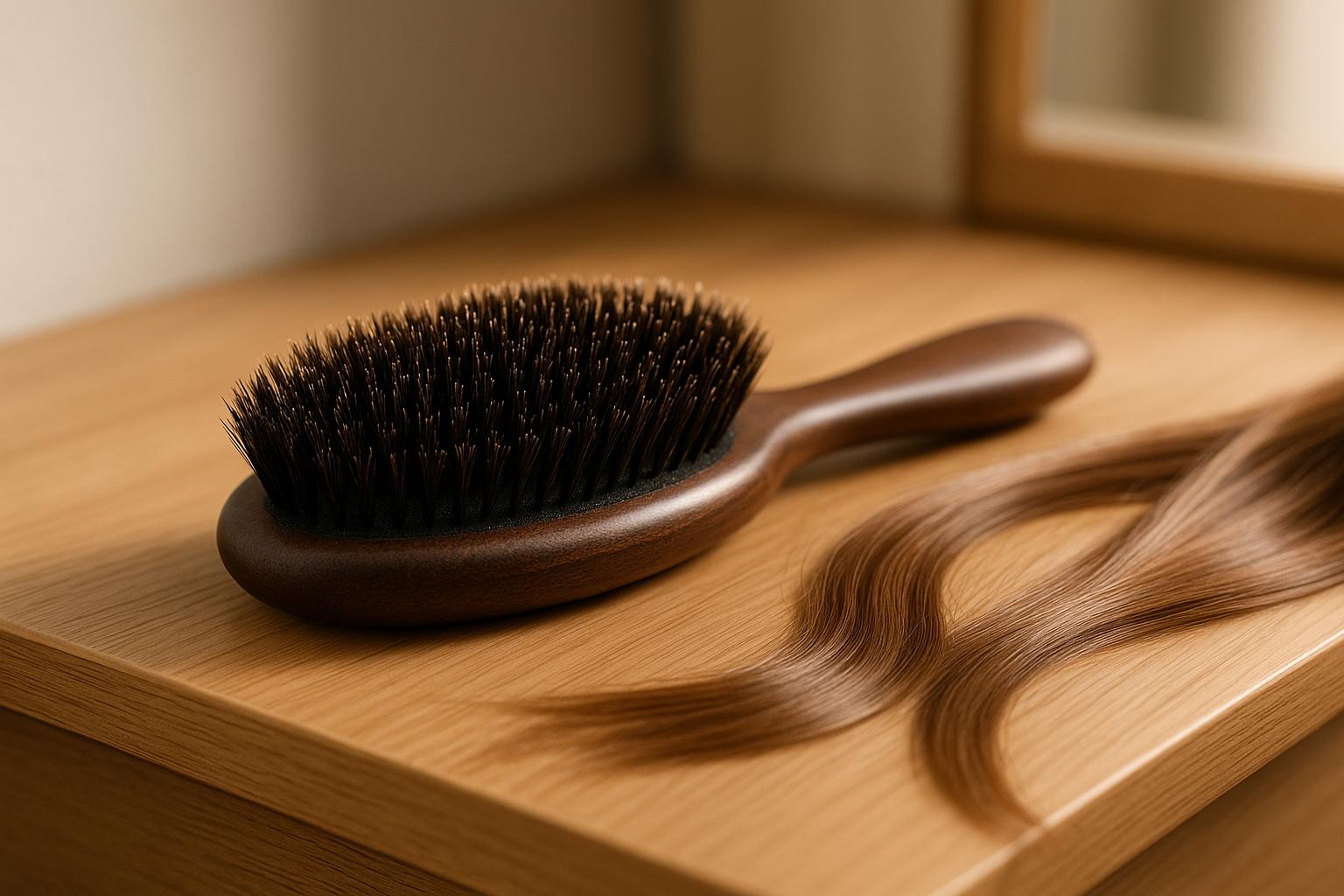Boar Hair vs. Synthetic Brushes: Which One Delivers Better Results?
When it comes to hair brushes, the choice between boar hair and synthetic bristles can make a big difference in styling and hair health. Here's the quick breakdown:
- Boar Hair Brushes: Great for fine to medium hair. They distribute natural oils, add shine, reduce frizz, and promote scalp health. However, they struggle with thick or curly hair and require regular cleaning.
- Synthetic Brushes: Ideal for thick, curly, or textured hair. They detangle effectively, work well with heat styling, and are easy to maintain. But they don't enhance natural shine as well as boar brushes.
Quick Comparison:
| Feature | Boar Hair Brushes | Synthetic Brushes |
|---|---|---|
| Material | Natural boar hair | Nylon, polyester, plastic |
| Best Hair Types | Fine, straight, medium | Thick, curly, coarse |
| Shine and Oil Distribution | Excellent | Limited |
| Heat Resistance | Low | High |
| Maintenance | More effort required | Easy |
Choose boar hair for smooth, shiny results on fine hair, or synthetic for detangling and heat styling on thicker textures.
The Difference Between Boar and Nylon Bristles! (Boar vs Nylon)
Boar Hair Brushes: Performance and Uses
Boar hair brushes are known for their ability to distribute scalp oils, boost shine, and stimulate the scalp. Thanks to their natural composition, they provide benefits that synthetic brushes often can't match.
Benefits of Boar Hair Brushes
One of the key advantages of boar hair brushes is how effectively they spread natural oils from your scalp along the length of your hair. This is possible because boar bristles are made of keratin - the same protein found in human hair - giving them a similar texture. As La Bonne Brosse puts it:
"Boar bristles improve the elasticity, waterproofing and resistance of our hair...they also allow for gentle detangling and better sebum distribution. After brushing, the hair is nourished, soothed and shiny: it comes back to life!"
By redistributing sebum, these brushes can help prevent dryness, leaving hair nourished and noticeably shinier.
Another perk is scalp stimulation, which promotes blood flow, encourages healthier hair growth, and helps exfoliate dead skin cells. Plus, the smoothing effect of boar bristles reduces frizz and static, offering a gentler alternative to synthetic brushes. Hairstylist Kim Kimble highlights this benefit:
"Boar bristle brushes are great because their soft bristles glide through hair, leading to less hair breakage during styling."
For those with fine to medium hair, boar brushes provide a perfect balance of gentle detangling and styling. Elena P., a user with fine hair, shares her story:
"Using this brush helps to work those oils through my hair, stimulate my scalp, and give me the best volume of my life!"
To get the most out of a boar hair brush, use it on dry hair, starting from the ends and working your way up with gentle strokes. This technique ensures even oil distribution and reduces the risk of breakage.
That said, boar hair brushes aren't ideal for everyone.
Drawbacks of Boar Hair Brushes
While boar hair brushes offer plenty of benefits, they do have some limitations. Their soft bristles often struggle to penetrate thick or coily hair, making them less effective for those textures. For dense or coily hair types, a wide-tooth comb is a better option.
Another consideration is maintenance. Regular cleaning with warm water and mild soap is essential to remove oil buildup and keep the brush working effectively. Without proper care, the brush can lose its performance over time.
Synthetic Brushes: Performance and Uses
Synthetic brushes are known for their durability and adaptability. Crafted from materials like nylon or plastic, they’re designed to handle a variety of styling routines with ease.
Benefits of Synthetic Brushes
Synthetic bristles are both sturdy and flexible, making them ideal for detangling all hair types, whether thick, wavy, or straight, without causing damage. They’re particularly useful on wet hair, as they glide through tangles without excessive breakage, a common concern when working with damp strands.
Another advantage is their ability to reduce static and tame flyaways, leaving hair with a smooth and polished finish. This makes them a go-to choice for blow-drying, as they help achieve sleek, frizz-free results.
Cleaning synthetic brushes is a breeze. A simple wash with mild detergent quickly removes product buildup, keeping them in top condition. Trichologist Anabel Kingsley, owner of Philip Kingsley, suggests cleaning your brush every two to four weeks using baking soda and water or diluted shampoo for best results.
These brushes also stand out for their affordability, offering professional-quality performance at a fraction of the cost of natural hair brushes. Adem Oygur notes that synthetic brushes typically maintain their effectiveness for 6 to 12 months, with lighter use extending their lifespan.
However, synthetic brushes aren’t without their shortcomings.
Drawbacks of Synthetic Brushes
One major limitation is their reduced ability to enhance natural shine. Unlike boar bristles, synthetic bristles struggle to distribute natural scalp oils effectively, which can leave hair less smooth and shiny.
Durability of the bristles can also be an issue with heavy use. While the brush itself is built to last, the synthetic bristles are more prone to breaking or losing pins, especially when used on thicker or curly hair that puts additional strain on them. For those with demanding hair textures, this may mean replacing the brush more frequently.
Boar Hair vs. Synthetic Brushes: Side-by-Side Comparison
Building on earlier insights, let’s dive into how boar hair and synthetic brushes stack up against each other. Understanding their differences can help you pick the right tool for your hair type and styling needs.
Key Comparison Factors
Material and Construction
Boar bristles are natural fibers with a micro-textured surface that polish hair and evenly distribute scalp oils. These brushes feature tightly packed bristle clusters, making them great for smoothing and adding shine. Synthetic bristles, typically made from nylon or polyester, have a smoother surface and are arranged as individual spokes. This design allows them to reach deeper into thick hair sections for detangling and styling.
Performance on Different Hair Types
Boar bristle brushes are a gentle option for fine, straight, or sensitive hair. They help smooth strands and minimize frizz without causing damage. Synthetic brushes, with their firmer bristles, are better suited for thick, curly, or coarse hair. They’re effective at working through knots and adding volume, making them a go-to for more textured hair types.
Styling Capabilities
If your goal is to enhance shine and reduce frizz, boar bristle brushes are a fantastic choice. However, they’re not designed for heat styling. Synthetic brushes, in contrast, are heat-resistant, making them ideal for blow-drying, curling, and styling wet hair. They can withstand the high temperatures of professional styling tools without losing their shape or effectiveness.
Maintenance and Durability
Synthetic brushes are easier to clean and tend to last longer, even with frequent use. Boar bristle brushes, while durable, require more effort to maintain as they can trap dirt, oils, and product residue. That said, with proper care, high-quality boar bristle brushes can last for years.
Price Considerations
Synthetic or vegan brushes are generally more budget-friendly than premium boar bristle brushes, making them a practical choice for those looking for affordability without sacrificing performance.
Comparison Table
| Feature | Boar Hair Brushes | Synthetic Brushes |
|---|---|---|
| Material | Natural boar hair | Nylon, polyester, plastic |
| Bristle Surface | Micro-textured | Smooth |
| Bristle Arrangement | Compact clusters | Individual spokes |
| Best Hair Types | Fine, straight, sensitive | Thick, curly, coarse |
| Primary Benefits | Enhances shine, distributes oils, reduces frizz | Detangling, adds volume, scalp massage |
| Heat Resistance | Low (not suitable for heat styling) | High (designed for blow-drying) |
| Maintenance | More challenging to clean | Easy to clean |
| Durability | Long-lasting with proper care | Highly durable |
| Best Use Cases | Daily brushing, oil distribution, shine enhancement | Wet hair detangling, heat styling, volume creation |
Boar bristle brushes are perfect for fine, straight hair that benefits from added shine and oil distribution. On the other hand, synthetic brushes excel at handling thick, curly hair and are a must-have for heat styling. Up next, we’ll explore how to choose the right brush for professional-level styling based on these factors.
How to Choose the Right Brush for Professional Styling
The brush you choose can make or break your styling results. For professionals, having the right tools ensures consistent quality across a variety of hair types and styles. Let’s break down how to match your brush choice to your professional needs.
Factors to Consider
Your decision should hinge on both the hair’s characteristics and the desired style.
Hair Type and Texture play a big role in determining the best brush. Boar bristle brushes are a great match for straight, wavy, fine, or thin hair because they distribute natural oils evenly. They’re especially effective for clients with normal to oily scalps.
On the other hand, synthetic brushes excel with thick, curly, or coarse hair. Their sturdy bristles can handle tangles and glide through even the toughest strands .
Styling Goals should also guide your choice. Boar bristle brushes are ideal for creating smooth, polished looks and boosting natural shine, thanks to their micro-textured bristles that spread natural oils across the hair. If your styling involves heat tools or creating volume, synthetic bristles are designed to handle high temperatures and deliver the lift you need.
Professional Salon Requirements are another key factor. Synthetic brushes are durable and easy to sanitize, making them perfect for maintaining salon hygiene standards. Boar bristle brushes, while long-lasting with proper care, require more frequent cleaning to remove trapped oils, dirt, and product buildup.
Client Comfort is essential for building trust and repeat business. For clients with sensitive scalps, softer bristles - like those on natural or wooden brushes - are gentler. Boar bristles, known for their flexibility and softness, also provide a comfortable experience.
These considerations naturally lead to the advantages of combination brushes, which bring the best of both worlds.
When to Use Combination Brushes
Combination brushes offer a unique blend of benefits by mixing natural boar bristles with synthetic materials like nylon. They combine the shine-enhancing and oil-distributing properties of boar bristles with the detangling strength and heat resistance of synthetic ones.
For thick hair, paddle brushes with mixed bristles are especially effective. The nylon pins work through dense strands with ease, while the boar bristles enhance shine. Additionally, these brushes help reduce static and frizz, making them a go-to for taming flyaways.
The spacing of the bristles also matters. Brushes with closely spaced bristles are better suited for fine hair, while wider spacing works well for thicker hair types.
Saki Shears' Commitment to Quality

Professional stylists need tools they can count on, and Saki Shears delivers exactly that. Known for their premium Japanese steel scissors, Saki Shears also offers a range of professional-grade accessories, including brushes, designed with the same commitment to quality and precision. Their tools feature ergonomic designs, durable construction, and consistent performance - qualities backed by a lifetime warranty.
When selecting brushes, prioritize the same attributes that make Saki Shears scissors stand out: durability, comfort, and reliability. These qualities ensure your tools will support you through every style and every client.
Conclusion
This review has explored how different brush types meet various hair needs and styling preferences. For instance, boar bristle brushes are perfect for adding shine and distributing natural oils, making them a great choice for fine to medium hair types. On the other hand, synthetic brushes are the go-to option for thick, curly, or textured hair, thanks to their durability and heat resistance. If you're looking for a versatile option, mixed bristle brushes combine the best of both worlds - enhancing shine with boar bristles while tackling tangles with synthetic ones, all while helping to reduce static and frizz.
Comfort is another key factor when selecting a brush. For clients with sensitive scalps, softer materials like natural boar or wooden bristles can provide gentle care without causing irritation.
FAQs
What’s the best way to clean and maintain a boar hair brush for long-lasting use?
To keep your boar hair brush in top shape, start by removing any hair or debris from the bristles. You can use a comb or a small cleaning brush for this step. Then, mix a bit of mild shampoo or soap with lukewarm water. Dip just the bristles into the solution for a moment - be careful not to soak the handle - and gently scrub to clean away dirt and oils. Rinse the bristles thoroughly with lukewarm water to get rid of any soap residue.
Once clean, shake off any excess water and place the brush bristle-side down on a clean towel in a well-ventilated space. Let it air dry completely before using it again. Cleaning your brush about once a week will help keep it in great condition and extend its lifespan.
Are synthetic brushes more likely to damage hair compared to boar hair brushes with regular use?
Synthetic brushes tend to be rougher on hair, especially with frequent or improper use. Their stiff bristles can tug or snag, which increases the risk of breakage - this is particularly true for wet or delicate hair.
In contrast, boar hair brushes are much gentler. They help spread your scalp's natural oils evenly, minimizing friction and leaving your hair smoother and shinier. This makes them an ideal option for regular use, especially if you're focused on maintaining healthy, glossy hair.
What are the benefits of using a brush with both boar and synthetic bristles for different hair types?
A brush that blends boar bristles with synthetic bristles brings together the strengths of both materials, making it a versatile choice for different hair types. Boar bristles are known for their ability to evenly distribute natural scalp oils, which helps reduce frizz and boost shine - perfect for fine to medium hair. Meanwhile, synthetic bristles, like nylon, excel at detangling and smoothing, especially for thicker or curly hair.
By combining these two types of bristles, this brush offers a multi-purpose solution. It enhances shine, tames frizz, and gently detangles, catering to a variety of hair textures and styling needs. Whether your hair is fine, thick, or curly, this tool can help you achieve smooth, healthy-looking results with ease.
Related posts
- The Ultimate Hair Brush Guide: Boar Bristle, Paddle, and Round Brushes Explained
- Boar Bristle vs. Paddle vs. Round Brush: Which One Is Best for Your Hair Type?
- Get Salon-Quality Hair at Home: Choosing the Right Brush for Your Styling Needs
- The Ultimate Guide to Choosing the Best Boar Hair Brush for Shiny, Frizz-Free Hair



